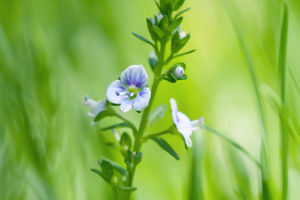Agaricus campestris is an edible mushroom widely distributed worldwide, especially in Europe, North America, and Asia.
As a member of the Agaricus family (Agaricaceae), it is one of the wild mushrooms that people frequently pick and eat.
Agaricus campestris is not only prized for its delicious taste but also for its high nutritional value, making it an ideal natural food.
First of all, the appearance of Agaricus campestris is somewhat unique. The mushroom usually has a white or light brown cap, which can reach a diameter of 10 cm when mature. The cap is initially spherical or hemispherical, gradually unfolding into an umbrella shape as it grows.
The surface of the cap is smooth and slightly fibrous. The gills are light pink at first, and as the mushroom matures, the color changes to dark pink or dark brown, eventually turning almost black. This color transition is one of its key identification characteristics.
The stipe is about 4-8 cm long and 1-2 cm in diameter, with a color similar to the cap—white or light brown—and has a tough texture that breaks easily. Additionally, the spore print of Agaricus campestris is dark brown, which is another important feature for classification.
From an ecological perspective, Agaricus campestris is a saprophyte that usually grows in places rich in organic matter, such as grasslands, pastures, farmlands, and parks. Its most suitable growing season is from late summer to early autumn, particularly in warm and humid weather.
Due to its need for organic matter, this mushroom often appears in animal manure, decaying plant residues, or soil rich in organic nutrients. The locations where Agaricus campestris grows make it an important player in the decomposition of organic matter in pastures, promoting soil nutrient cycling.
The nutritional value of Agaricus campestris should not be overlooked. Like other edible fungi, it is rich in protein, dietary fiber, several vitamins (such as B vitamins and vitamin D), and minerals (such as potassium, phosphorus, and magnesium).
B vitamins play a critical role in the proper functioning of the nervous system and energy metabolism, while vitamin D aids in calcium absorption and maintaining bone health.
Furthermore, Agaricus campestris contains very little fat and almost no cholesterol, making it an excellent choice for low-calorie, low-fat diets. It is also high in antioxidants, which help protect human cells from free radical damage, thus potentially preventing certain chronic diseases.
Although Agaricus campestris is widely consumed as a wild mushroom, caution is necessary when distinguishing it from poisonous species, particularly Agaricus xanthodermus (yellow-staining mushroom).
Agaricus xanthodermus is similar in appearance to Agaricus campestris, but the yellow-staining mushroom quickly turns yellow when cut and has an unpleasant medicinal odor, which is its main distinguishing feature.
Consuming the yellow-staining mushroom may lead to symptoms of poisoning such as nausea, vomiting, and diarrhea. Therefore, it is essential for inexperienced mushroom pickers to accurately identify Agaricus campestris and its look-alikes.
Through careful foraging and scientific research, we can better utilize this natural resource, offering more options for human nutrition and health.
However, extra caution is needed when picking wild mushrooms to avoid accidentally consuming poisonous species and ensure food safety. Agaricus campestris is not only a tasty delicacy but also a potential natural health food that deserves further exploration and study.


